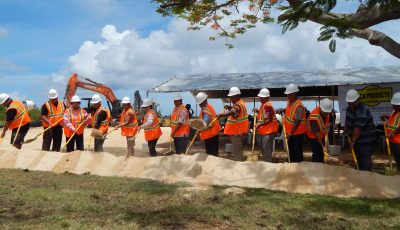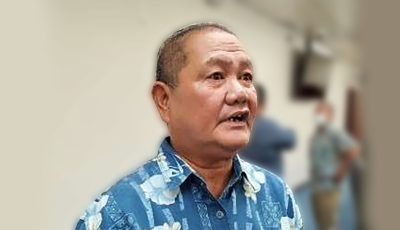Herman’s Bakery
One of those inconspicuous places along Rte. 35 aka Airport Road in Saipan is the Herman’s Modern Bakery with its Tita Marikita Café that offers local gourmet. Not frequently, but I go there to meet friends and colleagues. Their sweet bread will delight a tooth any day. The cost of their offerings beats the lagoon hotel restaurants and pantry hands down.
Late January, I had reason to mosey over. My intent to merge island touring with a language immersion program finally got to a flyer and a spiral bound that I can pass around to promote the addition to our visitors’ menu so I sought first the one known simply as the “chairman,” father of a former 6th grade student at SVES, at the 75-year old bakery, named before its namesake, a forebear of our acquaintance.
Now with a branch in Garapan that I have yet to patronize other than ask direction from the staff, the family bread maker and native food server broadened its breadbasket to serve a more cosmopolitan clientele. My colleague’s generation (my age, mas o menos) handed over management and operation to the younger ones though our friend and his sister remains in the board, and the sister still has her finger in the daily management of the business.
We chose the bakery to title our reflection not because we want to tell folks more about their bread but that the establishment represents a local family concern deciding to take the needs of a local situation and proceeded to provide a local response to it.
OK. Local family is a numinous term. In Korea, between the Park and the Kim, you are halfway down the population. It would be the Wang and the Li in China, though it would be more widespread in Japan, but not by much. In the Marianas, the indigenous families might find cohesiveness among Babauta, Camacho, and Tenorio families and their extended relations, then add Ogumoro and Tabuted into the stew and one might cover a substantial network of relationships on the small island of Saipan.
Like the leading families in many societies around the world, the pure indigenes are not the ones who preside over power structures; creoles do, mestizos and mix bloods. My daughter once hurled a banner at her university urging the “Mongrels of the World” to unite. On her mother side, she inherited German, Welsh, Scot, and English pedigrees and on her father side, Indo-Malay, Austronesia, Fujian, Spanish, and Mexican lineage. I am sure there are other breakdowns on categories like “German,” but never mind.
What makes one local these days is not chromosome pedigree but the resolve to take one’s location seriously and make it one’s home regardless of the constitution of one’s DNA make-up
At the bakery, the subject of genealogy and ancestry became a topic of discussion when another colleague came in, works on noting local stories of elders about their ancestry and record them for posterity. The records of Chamorro-Carolinian ancestries were with the Spanish parishes when they kept them; the German administration briefly had a conscientious caretaker. The Japanese and Americans were meticulous in keeping records especially at the time when both forbade the local population from speaking their language in order to learn the tongue of the occupiers. It was not propitious to be indigene a century ago.
Our colleague at the bakery, like my daughter, is a pure blood “mongrel.” He’s done extensive work on genealogy and says that he is stymied after the fourth generation, which is important to the Chamorro and Carolinian communities with their penchant to acknowledge relations, even by marriage, to as distant as recognizable.
The phenomenon of “Main Street” described by Sinclair Lewis novel of the same title might have been the source of my teacher’s dynamical sociology phenomenon labeled with the same name, where folks from Appalachia warring against each other for ages, find themselves in NYC and are suddenly kin. This applies to Filipinos who would not bother to get to know each other in their hometowns but are suddenly “related” in a foreign country.
Herman’s Bakery and Tita Marikita Café are such a leveler of social relations, ignoring the social strata defined elsewhere, the drawing card being the croissant and the coffee, along with the servings of native and off-island dishes in an atmosphere that is not too ostentatious. In fact, it was subdued when I was last there, only occasionally raucous when there were too many young ones, but otherwise, convivial.
The issue of the indigene is where we started and this is up front in the legitimacy of ancient lands vs. public lands. A friend at judiciary says that judges harbor automatic sympathies on claimants of ancient lands if they can prove utility, otherwise, he advises that claimants apply for Torrens titles. Many new entities, with the connivance of local families, are incorporating and buying land in the name of the companies that have majority holdings from acquiescing indigenes.
Cozy over, taste the bread!



























